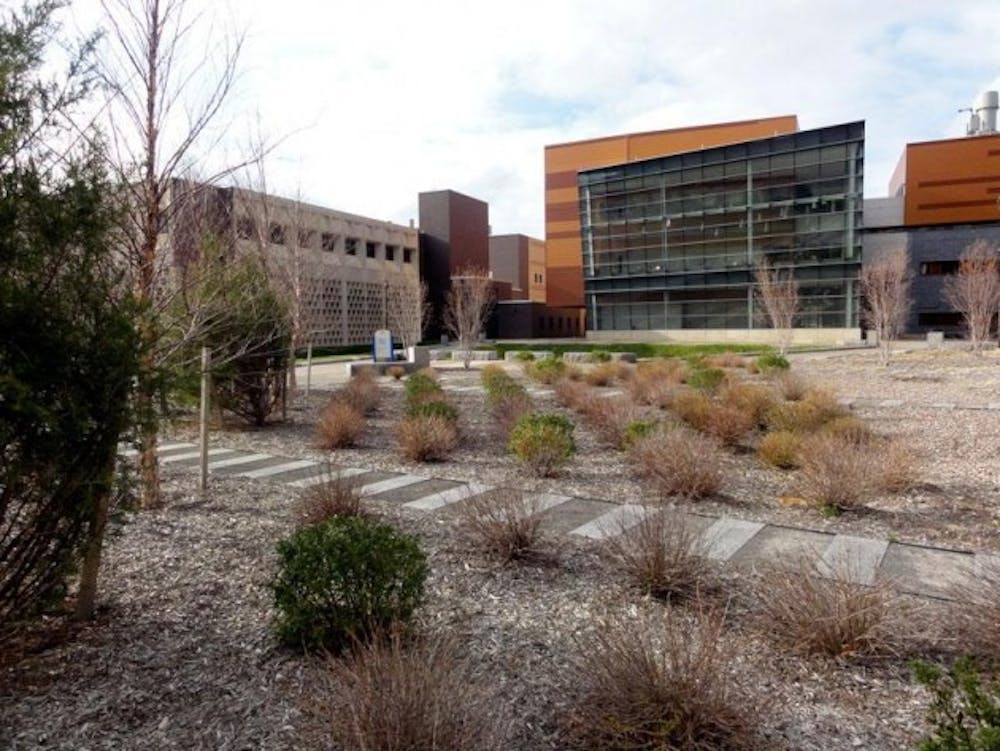Davis Hall, a building that houses the School of Engineering and Applied Sciences, opened its doors to students for the first time last May. Its construction was intended to reflect a vision inspired by UB engineers: to become eco-friendly.
The building, along with four others at UB, has received a gold certification by the U.S. Green Building Council's Leadership in Energy and Environmental Design (LEED). Its "green" features include the use of recycled building materials, methods to prevent storm damage and ventilation systems that conserve energy.
"This certification really speaks to me," said Dan McKinley, a senior mechanical engineering major. "Davis Hall is an example of how sustainable practices don't have to be costly or cumbersome."
McKinley, the president of UB Engineers for a Sustainable World, contributes directly to this movement. He collaborates with other environmental organizations, builds energy demonstrations and coordinates sustainability events.
He said the organization works to reduce humanity's harmful effects on the environment and helps UB move toward its climate-neutral goal. He considers Davis Hall an active example of the university's commitment to sustainability.
Ryan McPherson, the chief sustainability officer of the Office of Sustainability, said UB's plan for sustainability is both an environmentally and fiscally smart decision.
Davis Hall is climate-neutral; its ventilation system releases more energy than it consumes, which saves the university money. The way the building operates reflects the guiding principles of UB, McPherson said.
In addition to constructing all future buildings to a gold standard, McPherson revealed UB is the 11th-largest purchaser of renewable energy in the United States. He said 35 percent of all energy used at UB comes from wind power.
A gold certification is the second-highest recognition to platinum, according to the LEED website. Although being gold certified yields positive results for the environment, there are still some steps to take to reach the platinum level.
The solar cells located beside Flint Road are a new method of energy conservation that involves the recycling of silicon, a more abundant material.
Vladimir Mitin, a distinguished professor in electrical engineering, researches the "high-efficient solar cells" and hopes UB will incorporate solar cells in future building construction. He thinks using this technology could make buildings at UB have platinum recognition.
McPherson agrees. He said part of UB's plan is to have every future building constructed at UB achieve the same gold standard set by Davis Hall. He still believes a lot more can be done to promote a more environmentally sound campus.
"We've reduced greenhouse emissions by 30 percent, which is amazing," McPherson said. "But we still need to figure out how to use sources that eliminate more."
McPherson believes Davis Hall's level of sustainability is much higher than some of the buildings on campus that were constructed before 1970. He thinks it only makes sense to continue construction in the same direction.
"By 2030, this university is committed to having buildings that not only reduce emissions of greenhouse gases but offset those that already do," McPherson said.
McPherson said UB plans to become a completely climate-neutral campus by 2030.
Email: news@ubspectrum.com





